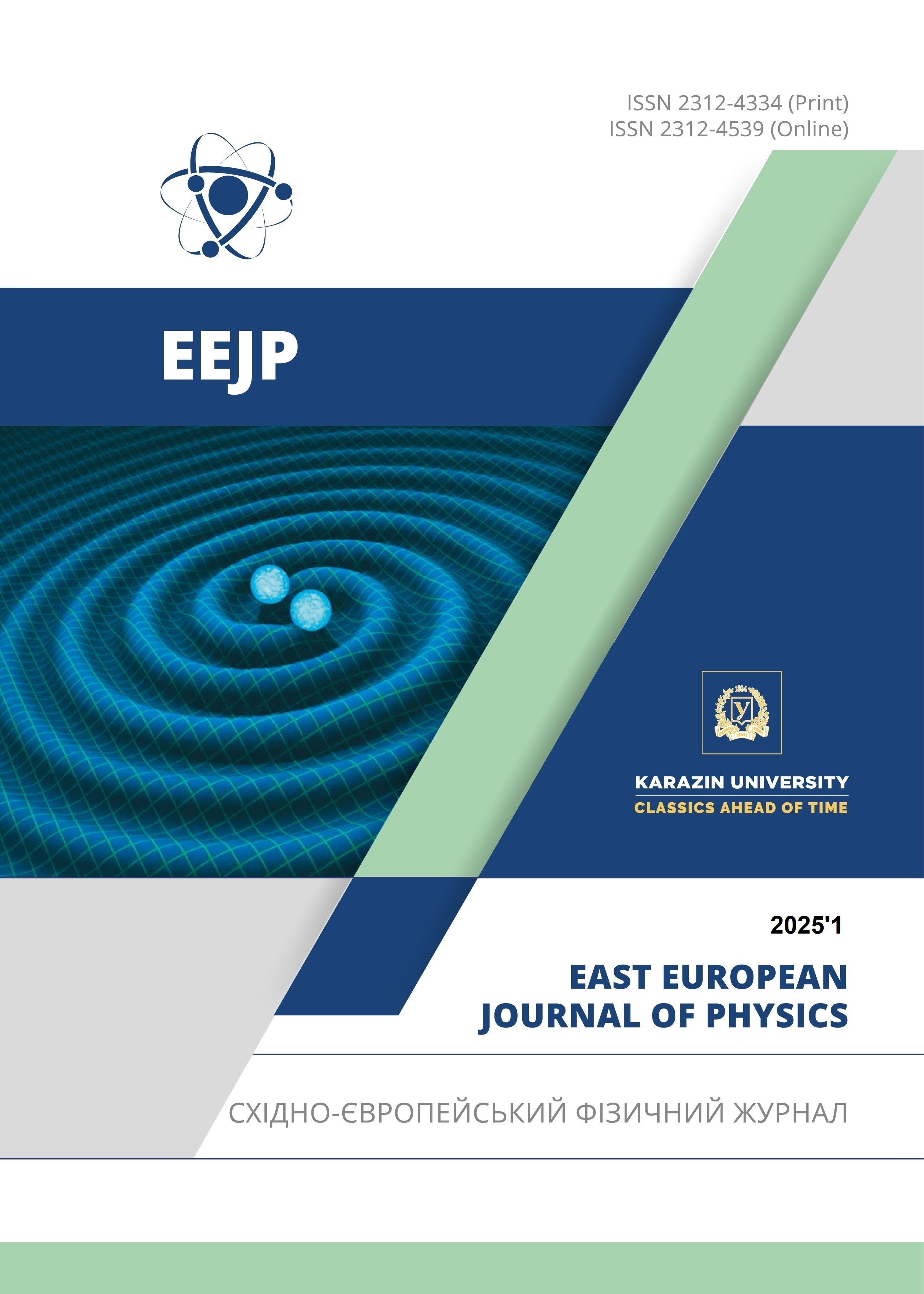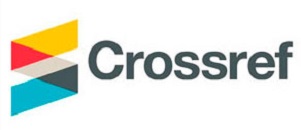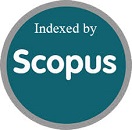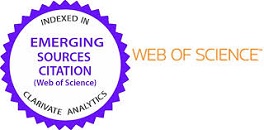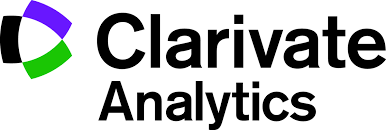Influence of Linear Doping Profiles on the Electrophysical Features of p-n Junctions
Abstract
This study investigated the impact of linear graded doping concentrations on the electrophysical properties of p-n junctions based on Si and GaAs. Doping gradients ranged from 1∙10¹⁶ to 1∙10²⁰ cm⁻4, and the analysis was performed at temperatures between 200 K and 500 K, in 100 K increments. The Poisson equation was solved for linear doping profiles, with analytical solutions derived for both Si and GaAs materials. These solutions provided detailed insights into the electric field, potential distributions, built-in potential, and the width of the depletion region. For both materials, the built-in potential was temperature-dependent, with Si exhibiting a more significant variation due to its higher intrinsic carrier concentration. The depletion region width was influenced by both doping concentration and temperature, with GaAs showing a more pronounced variation in width, owing to its distinct material properties compared to Si. The results highlight the crucial role of doping gradients and temperature variations in shaping the performance of the linear graded p-n junctions, offering valuable implications for the design of semiconductor devices such as diodes and transistors optimized for different temperature conditions.
Downloads
References
R. Ragi, R.V.T. da Nobrega, U.R. Duarte, and M.A. Romero, IEEE Trans. Nanotechnol. 15(4), 627 (2016). https://doi.org/10.1109/TNANO.2016.2567323
E. Gnani, A. Gnudi, S. Reggiani, and G. Baccarani, IEEE Trans. Electron Devices, 58(9), 2903 (2011). https://doi.org/10.1109/TED.2011.2159608
Z. Arefinia, and A. Asgari, Solar Energy Materials and Solar Cells, 137, 146 (2015). https://doi.org/10.1016/j.solmat.2015.01.032
O.V. Pylypova, A.A. Evtukh, P.V. Parfenyuk, I.I. Ivanov, I.M. Korobchuk, O.O. Havryliuk, and O.Yu. Semchuk, Opto-Electronics Review, 27(2), 143 (2019). https://doi.org/10.1016/j.opelre.2019.05.003
J.Sh. Abdullayev, and I.B. Sapaev, East Eur. J. Phys. (4), 329 (2024). https://doi.org/10.26565/2312-4334-2024-4-37
R.D. Trevisoli, R.T. Doria, M. de Souza, S. Das, I. Ferain, and M.A. Pavanello, IEEE Trans. Electron Devices, 59(12), 3510 (2012). https://doi.org/10.1109/TED.2012.2219055
J.S. Abdullayev, and I.B. Sapaev, East European Journal of Physics, (3), 344-349 (2024). https://doi.org/10.26565/2312-4334-2024-3-39R
B. Pal, K.J. Sarkar, and P. Banerji, Solar Energy Materials and Solar Cells, 204, 110217 (2020). https://doi.org/10.1016/j.solmat.2019.110217
J.Sh. Abdullayev, and I.B. Sapaev, Eurasian Physical Technical Journal, 21(3), 21 (2024). https://doi.org/10.31489/2024No3/21-28
P. Dubey, B. Kaushik, and E. Simoen, IET Circuits, Devices & Systems, 13(6), 6763 (2019). https://doi.org/10.1049/iet-cds.2018.5169
M.-D. Ko, T. Rim, K. Kim, M. Meyyappan, and C.-K. Baek, Scientific Reports, 5(1), 11646 (2015). https://doi.org/10.1038/srep11646
J. Abdullayev, and I. Sapaev, Physical Sciences and Technology, 11(3-4), 39 (2024). https://doi.org/10.26577/phst2024v11i2b05
A.M. de Souza, D.R. Celino, R. Ragi, and M.A. Romero, Microelectronics J. 119, 105324 (2021). (https://doi.org/10.1016/j.mejo.2021.105324).
L.O. Olimov, Semiconductors, 46(7), 898 (2012). https://doi.org/10.1134/S1063782612070159
L. Olimov, and I. Anarboyev, Silicon, 14, 3817 (2022). https://doi.org/10.1007/s12633-021-01596-1
L.O. Olimov, Appl. Sol. Energy, 46, 118 (2010). https://doi.org/10.3103/S0003701X1002009X
J.Sh. Abdullayev, I.B. Sapaev, and Kh.N. Juraev, Low Temp. Phys. 51, 60 (2025) https://doi.org/10.1063/10.0034646
M.C. Putnam, S.W. Boettcher, M.D. Kelzenberg, D.B. Turner-Evans, J.M. Spurgeon, E.L. Warren, et al., Energy & Environmental Science, 3(8), 1037 (2010). https://doi.org/10.1039/C0EE00014K
R. Elbersen, R.M. Tiggelaar, A. Milbrat, G. Mul, H. Gardeniers, and J. Huskens, Advanced Energy Materials, 5(6), 1401745 (2014). https://doi.org/10.1002/aenm.201401745
I. Sapaev, B. Sapaev, D. Abdullaev, J. Abdullayev, A. Umarov, R. Siddikov, A. Mamasoliev, et al., E3S Web of Conferences, 383, 04022 (2023). https://doi.org/10.1051/e3sconf/202338304022
L.O. Olimov, “Adsorption of alkali metals and their effect on electronic properties of grain boundaries in bulk of polycrystalline silicon,” Semiconductors, 44, 602 (2010). https://doi.org/10.1134/S106378261005009X
L.O. Olimov, Appl. Sol. Energy, 44, 142 (2008). https://doi.org/10.3103/S0003701X08020187
L. Olimov, and I. Anarboyev, AIP Conf. Proc. 3244, 060015 (2024). https://doi.org/10.1063/5.0242092
Copyright (c) 2025 Jo`shqin Abdullayev

This work is licensed under a Creative Commons Attribution 4.0 International License.
Authors who publish with this journal agree to the following terms:
- Authors retain copyright and grant the journal right of first publication with the work simultaneously licensed under a Creative Commons Attribution License that allows others to share the work with an acknowledgment of the work's authorship and initial publication in this journal.
- Authors are able to enter into separate, additional contractual arrangements for the non-exclusive distribution of the journal's published version of the work (e.g., post it to an institutional repository or publish it in a book), with an acknowledgment of its initial publication in this journal.
- Authors are permitted and encouraged to post their work online (e.g., in institutional repositories or on their website) prior to and during the submission process, as it can lead to productive exchanges, as well as earlier and greater citation of published work (See The Effect of Open Access).
